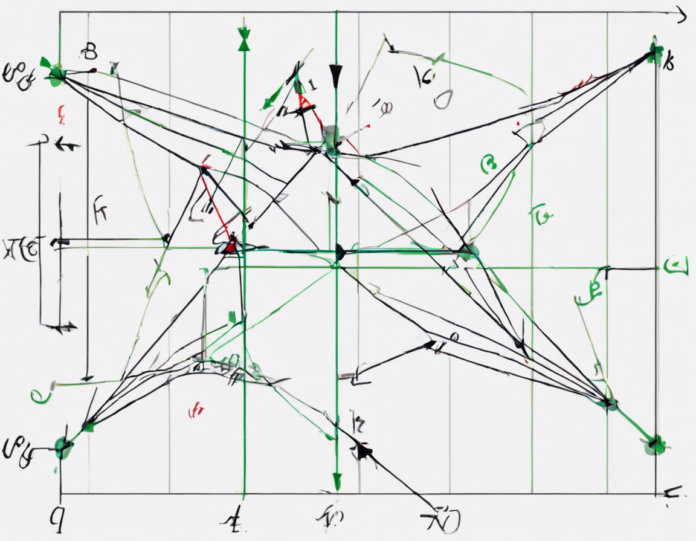Vectors are essential mathematical tools used in a variety of fields, including physics, computer science, and engineering. In vector mathematics, one important operation is projection, wherein one vector is "projected" onto another vector. This process allows us to find the component of one vector in the direction of another vector. In this article, we will delve into the concept of Vector A projection on Vector B, explain the mathematical framework behind it, explore its practical applications, and provide insights on how to calculate it effectively.
Understanding Vectors
Before we dive into vector projections, let's first ensure clarity on what vectors are. Vectors are quantities that have both magnitude and direction. They are often represented geometrically as arrows in space, where the length of the arrow corresponds to the magnitude of the vector, and the direction of the arrow indicates the direction of the vector.
Definition of Vector Projection
The projection of a vector A onto another vector B is a vector parallel to B that represents the component of A that points in the direction of B. This projection is denoted as projB(A).
Calculating the Vector Projection
To calculate the projection of a vector A onto another vector B, the formula is:
projB(A) = ((A ⋅ B) / ||B||^2) ⋅ B
Where:
- A ⋅ B is the dot product of vectors A and B
- ||B||^2 is the magnitude of vector B squared
Steps for Calculating Vector A Projection on Vector B
- Calculate the Dot Product: Compute the dot product of vectors A and B using the formula A . B.
- Calculate the Magnitude of B: Find the magnitude of vector B denoted by ||B||.
- Compute the Projection: Apply the formula mentioned earlier to determine the projection of A on B.
Practical Applications of Vector Projection
-
Physics: In physics, vector projections are used in various contexts. For instance, when an object moves on an inclined plane, determining the component of the gravitational force acting along the plane involves vector projections.
-
Computer Graphics: In computer graphics, understanding vector projections is essential for tasks like lighting calculations, shadow generation, and collision detection.
-
Engineering: Engineers utilize vector projections in structural analysis, motion dynamics, and signal processing to break down complex forces or vectors into simpler components.
Properties of Vector Projections
- The projection of a vector onto itself results in the vector itself.
- The projection of a vector onto a unit vector in the same direction results in the scalar multiple of that unit vector.
- The projection of a vector onto a perpendicular vector is the zero vector.
Example of Vector A Projection on Vector B
Let's consider two vectors: A = \<3, 4, 5> and B = \<1, -2, 1>. To find the projection of vector A onto vector B:
- Calculate the dot product: A ⋅ B = (3×1) + (4×-2) + (5×1) = 3 - 8 + 5 = 0.
- Calculate the magnitude of B: ||B|| = √(1^2 + (-2)^2 + 1^2) = √(1 + 4 + 1) = √6.
- Determine the projection: projB(A) = ((A ⋅ B) / ||B||^2) ⋅ B = (0 / 6) ⋅ \<1, -2, 1> = \<0, 0, 0>.
In this example, the projection of vector A onto vector B results in the zero vector due to their orthogonality.
Advantages of Vector Projections
-
Simplifies Calculations: Vector projections help simplify complex vector calculations by breaking them down into manageable components.
-
Enhances Problem Solving: By decomposing vectors into their components, vector projections aid in solving real-world problems involving forces, velocities, and directions.
-
Improves Visualization: Understanding vector projections can enhance spatial visualization skills, which is beneficial in various fields like graphics and physics.
FAQs (Frequently Asked Questions)
Q1: What does it mean to project one vector onto another?
A1: Projecting one vector onto another involves finding the component of the first vector that lies in the direction of the second vector.
Q2: How is the projection of a vector calculated mathematically?
A2: The projection of vector A onto vector B is found using the formula ((A ⋅ B) / ||B||^2) ⋅ B.
Q3: What is the significance of vector projections in physics?
A3: In physics, vector projections are crucial for resolving forces into components, especially in scenarios involving inclined planes or objects on different axes.
Q4: Can the projection of a vector onto another vector be longer than the original vector?
A4: No, the projection of a vector onto another vector cannot be longer than the original vector. It will be a scalar multiple or a zero vector.
Q5: How are vector projections used in computer graphics?
A5: In computer graphics, vector projections are utilized for tasks like lighting calculations, determining shadows, and handling object collisions effectively.
In conclusion, understanding vector projections, specifically Vector A projection on Vector B, is pivotal for various mathematical and practical applications. By mastering this concept, individuals can enhance their problem-solving skills, analytical abilities, and proficiency in diverse fields that heavily rely on vector mathematics.
